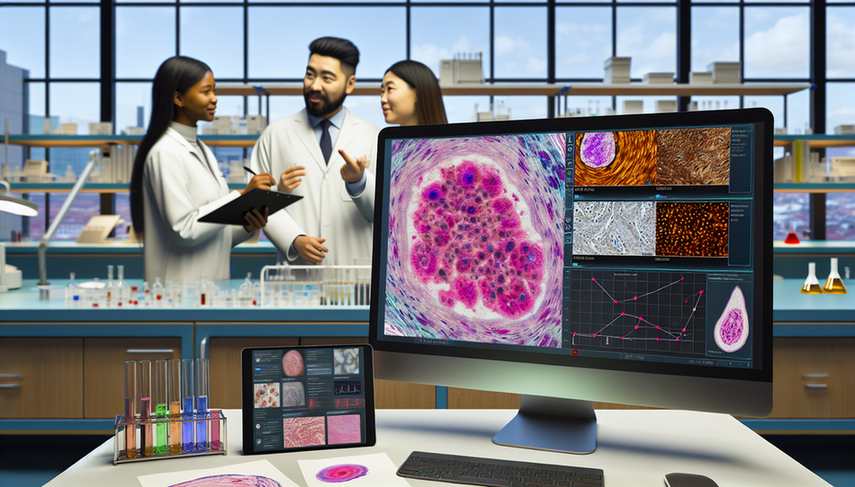Digital Pathology: The Role of AI in Histopathological Diagnosis and Microscopy Automation

Digital pathology has revolutionized the way pathologists interpret microscopic samples. With the digitization of pathology slides, it is now possible to make diagnoses using high-resolution screens instead of conventional microscopes. This advancement has not only optimized workflows but has also paved the way for the integration of artificial intelligence (AI) in the diagnostic process, enhancing accuracy and efficiency in the interpretation of samples [1].
The Impact of AI on Microscopy and Histopathological Diagnosis
The incorporation of AI in AI microscopy has led to significant advancements in histopathological diagnosis. A recent study demonstrated that a digital system augmented with AI significantly improved the accuracy in classifying colorectal polyps compared to traditional microscopic evaluation [2]. This type of automation in pathology not only reduces variability among observers but also optimizes evaluation time, allowing pathologists to focus on more complex cases.
Furthermore, AI has been utilized for the detection and quantification of soil-transmitted helminth infections, overcoming the limitations of conventional microscopy [3]. The ability of AI to analyze large volumes of data, or big data in tumors, has also been applied in generating virtually stained images, as seen in lung cancer diagnosis, where deep learning models have been shown to match the accuracy of traditional techniques [4].
Conclusions
The integration of AI in digital pathology represents a paradigm shift in medical diagnosis. The capacity of AI to enhance diagnostic accuracy, reduce workload, and provide faster, more consistent analyses is undeniable. As technology continues to advance, we are likely to see greater adoption of these tools in daily clinical practice, thereby improving patient outcomes and optimizing resources in pathology laboratories [5].
Referencias
- [1] Digitalisation of pathology slides allows pathologists to make diagnoses using a high-resolution computer screen instead of a conventional microscope.
- [2] Evaluation of an Artificial Intelligence-Augmented Digital System for Histologic Classification of Colorectal Polyps.
- [3] Artificial intelligence-based digital pathology for the detection and quantification of soil-transmitted helminths eggs.
- [4] Lung Cancer Diagnosis on Virtual Histologically Stained Tissue Using Weakly Supervised Learning.
- [5] Image Analysis in Histopathology and Cytopathology: From Early Days to Current Perspectives.
Created 20/1/2025
